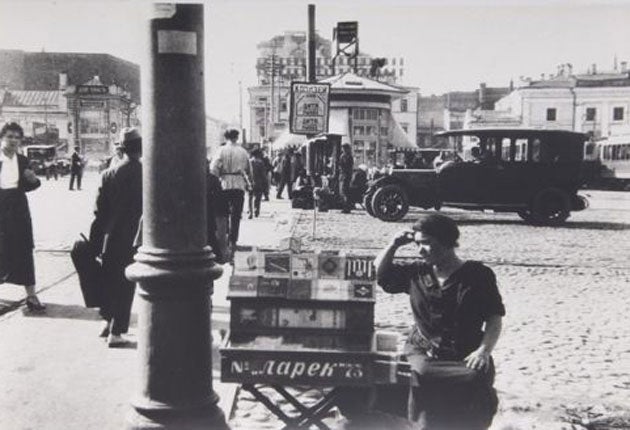Rodchenko and His Circle – Constructing the Future Through Photography, Art: Sensus, London

Your support helps us to tell the story
From reproductive rights to climate change to Big Tech, The Independent is on the ground when the story is developing. Whether it's investigating the financials of Elon Musk's pro-Trump PAC or producing our latest documentary, 'The A Word', which shines a light on the American women fighting for reproductive rights, we know how important it is to parse out the facts from the messaging.
At such a critical moment in US history, we need reporters on the ground. Your donation allows us to keep sending journalists to speak to both sides of the story.
The Independent is trusted by Americans across the entire political spectrum. And unlike many other quality news outlets, we choose not to lock Americans out of our reporting and analysis with paywalls. We believe quality journalism should be available to everyone, paid for by those who can afford it.
Your support makes all the difference.In 1921 the Russian Constructivist painter Alexander Rodchenko produced a suite of paintings in single, tonally neutral colours that were exhibited in a Moscow gallery. That revolutionary gesture, as he explained later, was tantamount to a declaration that painting was dead. The future lay with the newer arts of graphic design, cinema and photography. Painting reeked of nothing but stale antiquity.
This large and fascinating exhibition of black-and-white vintage prints in London, many acquired from the families of the photographers, and therefore unseen in public before, explores that aspirational afterlife of Rodchenko and other like-minded Soviet photographers. It shows us rallies, spanking new examples of workers' houses, the re-shaping of Moscow, and great dams under construction in far-flung Asiatic republics – look out, in particular, for a remarkable series of photographs from 1929 by Max Alpert of the building of the Great Fergana Canal in Uzbekistan by hundreds and hundreds of toiling men. The architectural lines of these new buildings are severe and uncompromising, like Constructivist art itself. Or see how skilfully Georgii Zelma has constructed his shot of bristling bayonets rising in front of radio masts. The atmosphere in the streets is feverish, and for the most part the general view of this brave new world of proletarian man seems to tow the party line – most faces are smiling, no matter how heavy the mattock across the shoulder.
Rodchenko's pithy, wake-up-call slogans spit at us from the beams, walls and staircases. Rodchenko did not die until 1956. He may have been a revolutionary, yet he was evidently a cunning one, who must have learnt to list with the wind in order to survive purges and disapproval.
To 19 March ( www.artsensus.com)
Join our commenting forum
Join thought-provoking conversations, follow other Independent readers and see their replies
Comments